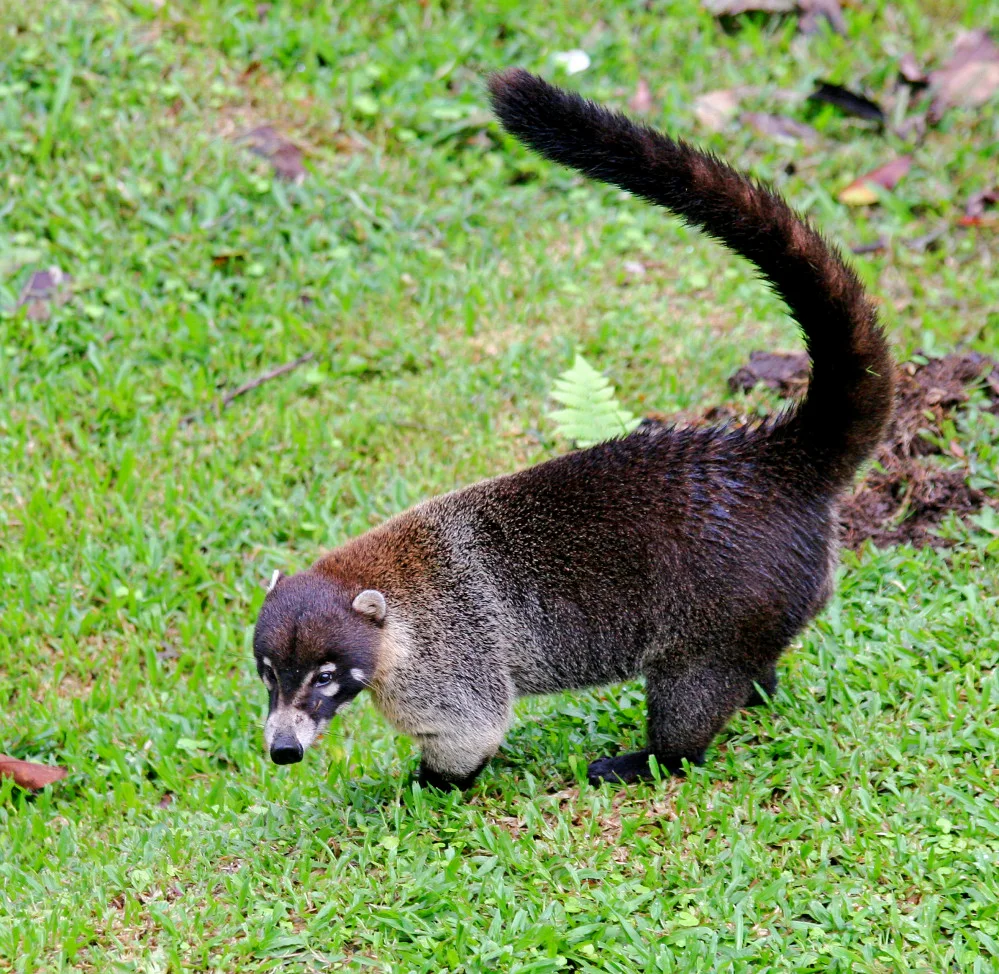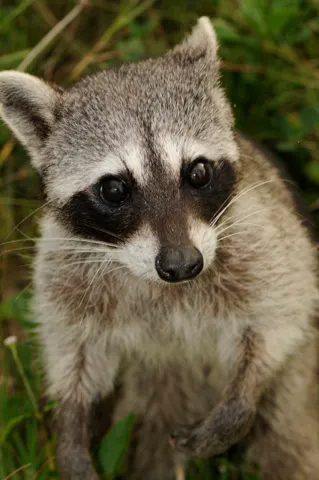
Canada is crawling with Procyonidae—and you’ve likely seen them
They’ve helped themselves to the efforts of your garden, knocked over trash cans, and left behind messes and tiny handprints in its wake. The raccoon is a visitor to urban streets and cabin decks alike and exists in every part of Canada except Newfoundland and Labrador. But who are these little bandits, exactly?

(Photo credit: Katy Jean/The Weather Network)
The raccoon is a curious creature belonging to the even more curious Procyonidae (pro-son-ee-dae) family.
Tabitha Cox, head nature interpreter at Shubenacadie Wildlife Park, shared more with The Weather Network on the family, raccoons, and their behaviour.
Not a cat, not a dog, not a bear
“Raccoons are interesting in that they were grouped in wrong spots several times before they ended up in Procyonidae," Cox explained. "They were thought to be like dogs and cats and rats, and particularly bears. They hung out in the bear category for a while. The Procyonidae family is fairly unique in that there are not many members in it, and they only live in North, Central, and South America. They are just this neat, specific little animal.”
Most of the rest of the family is a tropical species that are slender and long-tailed, but the thing that brings them all together is they are omnivores, fairly solitary, and nocturnal.

Another member of the procyonidae family, the white-nose coati. They are found in the southern United States as well as central to northern South America. (Source: Joseph C Boone/ Wikipedia CC BY-SA 3.0)
Raccoons generally only live about three years. The most senior of nature's roomba would live to about five. Being hit by cars, poisons, and traps lead to shorter lifespans, along with germs that they can collect including ringworm and diphtheria. This is one of the main reasons humans should not interact with the small beasts.
Cox warns, “The best thing is to not feed them or encourage them to linger around your space. They do carry germs.”

(Photo credit: Katy Jean/The Weather Network)
At least they wash their hands, kind of
There are many videos and photos of raccoons where it appears as though they are washing their hands and food. Many languages even have the animal named for the action. In French, they are known as raton laveur, meaning rat cleaner or rat washer, and in German, they are Waschbär, a wash bear.
But as Cox explained, that is not exactly what they are doing.
“They are originally a wetland creature, and when their paws are wet, they can feel more. If they were in a murky pond, their sensitive hands would be able to tell the difference between and egg or a fish or a rock. Tactile sense is their strongest and favourite sense.”

The much smaller and critically endangered cozumel raccoon lives in the cozumel island wetlands off of Mexico. (Source: Scott Camazine/ Wikipedia CC BY-SA 3.0)
Won’t you be my neighbour?
Being a wetland animal, obviously the city isn’t their natural habitat. They have adjusted and seem to be warming up to us quite well.
“Since they became more of an urban animal, they have kind of given up the wild nature where they used to live, and said ‘hey humans, I can live with you guys since you leave food around and shelter I can make use with’... They’ve adjusted very well into our lifestyle," Cox said. "That’s what makes them a bit of a nuisance animal. People run into them and don’t necessarily enjoy the encounter. They make a mess of their garbage and get into their attic and all kinds of things like that.”
WATCH: Raccoon meets Minnie the dog behind glass
Raccoons can also figure out locks and recall combinations for up to three years, even if put in a different order. Their tiny little hands know no bounds if they want into containers bad enough. Their little face masks appear to not just be natural markings but allow the little locksmiths to dress for the occasion.
They are in some ways relatable
Raccoons have their kits in springtime, and when fall arrives, just like us, they send their babies out into the world and hope they trained them well. The kits stay close to the mother up until then, which is why there may seem to be more wandering around that time of year.
READ MORE: New rule of nature? Study finds mice grow bigger on rainier side of mountain
Then the winter arrives, and again, just like us, they much prefer to stay inside.
“If it’s cold they're staying in. If it’s snowing they're staying in.” explained Cox.
They will wander around and see if they can find anything on the more pleasant winter days, but even with a fur coat, they would much prefer to stay home.
Unlike us, or unlike some of us, raccoons put on their weight in the spring, summer, and fall with a variety of nuts, berries, fish, eggs, and insects (and your garbage.) Though they stay inside as much as possible in the winter, they do not hibernate.
“They put on all kinds of weight, and they’re going to den up for the winter and hang out in that den," Cox continued. "They can lose 30-50 percent of their weight. They're not one that caches their food; but it’s not a true hibernation. Their body temperature does not drop.”
This period can last up to 10 weeks of raccoons denning up, which is back to being relatable for the winter.
Whatever opinion or name, albeit a sweet one or an unpublishable one, the raccoon is a strange little creature who has decided to live alongside us. The only Procyonidae to brave Canada and one of the only creatures that all but completely adapted to the destruction of habitats (they're going after your house because it was their house at one time.)










